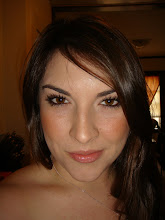If you could do it over again, what would you do?
Would you change something, do another thing differently, modify nothing at all? How does that go…hindsight is 20/20? After every experience we have in our daily lives, whether it went well or it was unspeakably terrible, we have a tendency to occupy an inner dialogue, look back, and think such things. Oh I know what I could have done to make that better, what I meant to say, or in my case, I know what I should have said instead.
Revision.
It’s something I try and do on a daily basis as to not make the same “mistakes” again. It’s true that we learn from our mistakes although some of us (guilty) inevitably repeat them. Once a document, a piece of writing, has been spell checked (hopefully) and printed, it’s extremely hard to make changes. White out and black ink are an ugly combination. Revision, although I do not always practice what I now preach, needs to occur.
In my writing studies I have learned that once a draft has been written, printed, and handed in, does not mean this is the end. However, for most students, myself included, it is the end. In reading Fulwiler I understand that a draft, whether it honestly be the first, or the final, can really be just the beginning. I have been saying to myself for four weeks now that writing is a process. It’s not simply the process that one goes through to get to the printing stage; it should be a multiple draft affair. To attempt multiple drafts, one must revise. Just as in “what I should have said” is, revising our written work is where we actually begin to understand, find, and ultimately tell our story. I am reminded of what my cooperating teacher told his students: “Reread the literature. This doesn’t mean read it once, it means read it more than once, by not doing so means you are not fully understanding what you are reading.” Reading and writing go hand in hand; just as we reread words for comprehension we must revise our writing for the same.
Fulwiler says, “Although writing gets better by rewriting, there are no guarantees. I know of no formula for revising that works ever time or for everyone-or every time for anyone. Revision is a chancy process: Therein lies both the excitement and the frustration.” There are no guarantees for anything in life, but what have you got to lose? Even in an attempt to revise you may find that the original draft suits you best. However, you may never have come to that conclusion without the revision process. Chancy? You bet. You may uncover some things that were not there when you first began. This just might be the ten bucks you didn’t know you had until you finally did your laundry. Who doesn’t appreciate that?
Speaking of appreciation, I’m truly mad about Harper’s toolbox. What a concept. A place in which to keep select devices, i.e. tools, to help one become a better writer. We all have a toolbox, no matter what profession or occupation. They are a necessity of life. Some may contain red pens and coffee, some Dewalts and flathead screws, others tiny pictures of cameras for snapshots and small volcanoes for exploding moments, of which are essential for one’s particular vocation.
I appreciate Harper’s honesty in originally just telling her students to revise their writing. I’m not going to lie; I’m guilty of that. Revise! What does that even mean? How? What? Educators assume that “revise” makes sense and says in just one word what we understand it to mean. Not so. That’s just like telling a student to merely brainstorm without scaffolding. Also guilty of that. Equivalently, we cannot expect a student to revise a paragraph and make it “better,” whatever that means, by saying show me what you mean, don’t tell me. We have all heard that show don’t tell expression in reference to writing, but exactly! Easier said than done right?
I am reminded of the excellent and infectious pedagogy of Mr. Tyler Livingston. He made his classroom into a very similar workshop (I love the pun). He explained to his students that writing is like making a scene. A complete scene is a balance of these tools: snapshots, thoughtshots, and dialogue, if it’s called for. Instead of writing, “use more detail here,” Tyler could draw a small camera-like picture next to the section that needed work, and this helped the students see he was looking for a zoom-in, a close up of detail. This is the difference between describing and really seeing. This is equally true of his little thought bubble and erupting volcano pictures.
We want our students to become better, good, excellent, talented, skilled writers yes? Then why not give them the tools they need to work with their words. This is so much more effective than “revise,” unless all you’re looking for is neater cursive. "When all you have is a hammer, everything looks like a nail." Could you just imagine….
Subscribe to:
Post Comments (Atom)

No comments:
Post a Comment